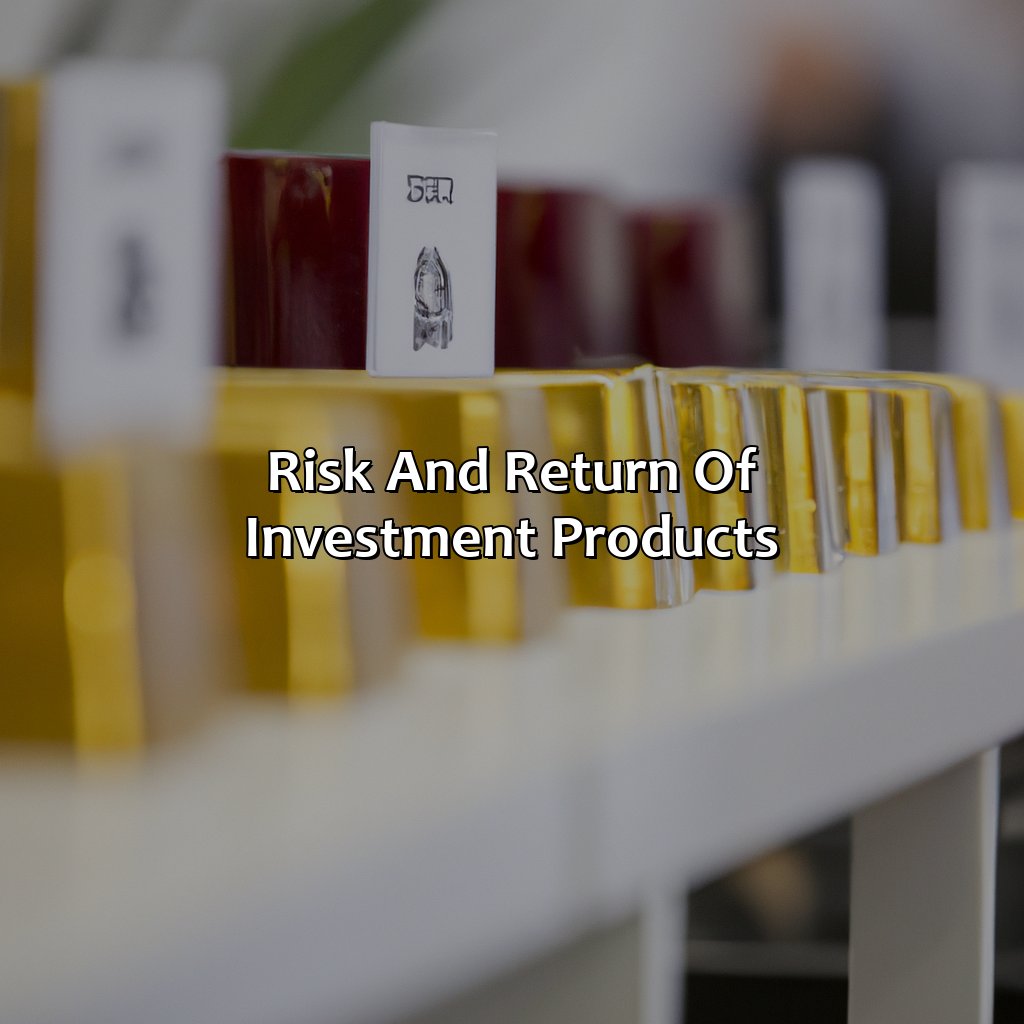What Are Investment Products?
Key Takeaways:
- Investment products are financial instruments that individuals can invest in to grow their money and achieve their investment goals. There are different types of investment products such as stocks, bonds, mutual funds, ETFs, and REITs.
- Risk and return are important factors to consider when investing in any investment product. Understanding the risks associated with each investment product and the expected return can help investors make informed decisions about their investments.
- Choosing the right investment product depends on an individual’s investment goals, investment horizon, risk tolerance, and asset allocation. Investors should take into consideration all of these factors before making any investment decisions.
Are you uncertain about investment products? Here you’ll find information on the various types of investment products available, and how they can help you reach your financial goals. You’ll learn how to identify the right ones for you.
Types of Investment Products
Investment products encompass a wide range of financial instruments that investors can choose from to park their money for potential returns. Below is a breakdown of the prominent types of investment products in the market:
| Types of Investment Products | Characteristics |
|---|---|
| Stocks | A share of a company’s ownership |
| Bonds | A loan to a company or government |
| Mutual Funds | A pool of money from multiple investors, managed by a professional |
| Exchange-Traded Funds (ETFs) | A basket of securities traded on an exchange |
| Real Estate | Tangible property bought for rental income or capital appreciation |
It’s important to note that some investment products carry more risk than others, and it’s essential to assess an individual’s risk tolerance before investing. It’s also worth mentioning that these products come with tax implications and management fees, which can eat into an investor’s returns.
A friend once invested a large sum in high-risk stocks and lost a considerable amount of money in a market downturn. It highlights the importance of diversification and careful financial planning when it comes to investing.

Image credits: retiregenz.com by Joel Arnold
Risk and Return of Investment Products
To understand the potential gains and risks associated with investment products, it’s important to consider their risk and return profile. Investment products offer varying degrees of risk and return, with some offering high returns and high risk, while others offer low returns but a low level of risk. A well-informed investor should consider their risk appetite and investment goals before choosing an investment product.
The following table presents the risk and return profiles of commonly available investment products.
| Investment Product | Risk | Expected Return |
|---|---|---|
| Stocks | High | 7-10% (long-term) |
| Bonds | Low-Medium | 3-5% (long-term) |
| Mutual Funds | Medium | 5-8% (long-term) |
| Exchange-Traded Funds (ETFs) | Low-Medium | 5-8% (long-term) |
| Real Estate | Medium-High | 5-7% (long-term) |
Investors should note that past performance is not necessarily indicative of future results, and that the listed returns are only expected, not guaranteed. Additionally, risk and return can vary greatly within each investment product type, depending on factors such as the specific company’s financial health or the type of bond.
It’s also worth noting that alternative investment products may offer different risk and return profiles, such as private equity or hedge funds. These products may be suitable for more experienced investors looking for higher levels of risk and reward.

Image credits: retiregenz.com by Adam Jones
Choosing the Right Investment Product
Investment products are diverse and complex. Choosing the most appropriate one requires careful consideration and research. One effective approach is to assess personal financial goals, risk tolerance, and investment time frame. This will provide clarity and guide the selection process. It is important to prioritize investment products that are aligned with the individual’s financial goals and values.
Investment options vary based on returns, risk, liquidity, and fees. Some common investment products are:
- stocks
- bonds
- mutual funds
- exchange-traded funds (ETFs)
- real estate investment trusts (REITs)
- commodities
Each of these comes with specific advantages and disadvantages, and investors need to weigh the options before making a decision.
In addition to traditional investment products, alternative investment products like hedge funds, private equity, and venture capital may align with some investors’ goals and preferences. These options may offer higher returns but come with higher risk and less liquidity. It is important to have a clear understanding of these products before investing.
To choose the right investment product, one must consider multiple factors, such as investment goals, risk tolerance, tax implications, fees, and time horizon. A well-diversified portfolio is crucial, containing a mix of investment products that complement each other. For example, a portfolio may have a mix of stocks and bonds to balance risk and return. It is also crucial to stay informed and keep up with market trends and changes in the investment landscape.

Image credits: retiregenz.com by Harry Jones
Five Facts About Investment Products:
- ✅ Investment products are financial instruments used to earn a return on investment. (Source: The Balance)
- ✅ Examples of investment products include stocks, bonds, mutual funds, ETFs, options, futures, and real estate. (Source: Investopedia)
- ✅ Different investment products have different risk and return profiles. (Source: Fidelity Investments)
- ✅ The choice of investment products depends on investment goals, risk tolerance, and time horizon. (Source: U.S. Securities and Exchange Commission)
- ✅ Investment products are regulated by government agencies to protect investors and maintain market stability. (Source: Financial Industry Regulatory Authority)
FAQs about What Are Investment Products?
What are investment products?
Investment products are financial instruments that individuals or institutions can buy with the goal of generating a return on investment. Some common investment products include stocks, bonds, mutual funds, real estate, and exchange-traded funds.
What are the risks involved with investment products?
All investment products come with some level of risk. The potential risks can include changes in interest rates, market volatility, and the risk of losing money. It is important to thoroughly research any investment product before making a decision to invest.
Why should I invest in investment products?
Investing in investment products can help you grow your wealth and reach your financial goals. Depending on the investment product you choose, you may be able to generate income through dividends or interest payments, or earn capital gains through the appreciation of your investment.
How do I choose the right investment product?
Choosing the right investment product depends on your financial goals, risk tolerance, and investment timeline. It’s important to consider factors such as fees, diversification, and historical performance when selecting an investment product.
Can I lose money with investment products?
Yes, it is possible to lose money through investment products. All investments come with some level of risk, and even the most well-researched and thought-out investment can result in losses.
What is diversification and why is it important when investing in investment products?
Diversification refers to spreading your investments across multiple asset classes or investment products to mitigate risk. By diversifying your investments, you can reduce your exposure to any one investment product and potentially reduce your risk of losses. It is important to note that diversification does not guarantee against losses.


